(আগের অধ্যায়ের আলোচনার লিংক – https://thedoctorsdialogue.com/concept-of-anatomy-in-shushrut-samhita/)
শুরুর কথা
মানুষের দেহের শবব্যবচ্ছেদ (এখন থেকে ডিসেকশন লিখব) দেশ, কাল সংস্কৃতি এবং সমাজ নিরপেক্ষভাবে কোনসময়েই সমাজে চিকিৎসাবিদ্যা শিক্ষার অঙ্গ হিসেবে স্বীকৃত ছিল না, গৃহীতও হয়নি। গ্রীক এবং রোমান সভ্যতায় ডিসেকশনের চল ছিলনা। প্রাক-রেনেসাঁ যুগে প্রায় ১৩০০ বছর ধরে যার তত্ত্ব চিকিৎসাবিদ্যার জগতকে নির্ধারণ করেছে, সেই গ্যালেনও কোন ডিসেকশন (মনুষ্যদেহের) করেন নি। তিনি প্রধানত Barbary apes (macaques), শূকর এবং অন্যান্য জীবজন্তুর দেহ ডিসেকশন করেছিলেন – মানুষের নয়।
স্মরণে রাখা দরকার, ভেসালিয়াসের (Andreas Vesalius – 1514-1564) প্রাথমিক লক্ষ্য হিসেবে নতুন ত্রিমাত্রিক দেহের ডিসেকশন নজরে ছিলা না। তাঁর প্রধান লক্ষ্য ছিল গ্যালেন যেসব অঙ্গপ্রত্যঙ্গের কথা বর্ণনা করেছেন, সেগুলো নিজের চোখে প্রত্যক্ষত যাচাই করে নেওয়া। এই কাজটি করতে গিয়ে তিনি মানুষের দেহের ধারণার ক্ষেত্রে বিপ্লব ঘটালেন। সমসাময়িক অনেকেই (দা ভিঞ্চি, মাইকেলাঞ্জেলো প্রভৃতি) মানুষের ডিসেকশন করেছিলেন। কিন্তু ভেসালিয়াসের মতো দেহের ধারণার ক্ষেত্রে এরকম সর্বাত্মক পরিবর্তন আনতে পারেন নি। একজন গবেষক জানাচ্ছেন – “In the midst of the revolutionary sixteenth century, anatomy was still dominated by the second century Greek physician Galen … Vesalius himself, as he began his work at Padua, was still a loyal Galenist.”[1]
এমনকি ১৫১০ সালেও Magnus Hundt যখন দেহের অভ্যন্তরের চিত্র তৈরি করছেন তখন তার মধ্যে জুড়ে থাকছে ধর্মীয় অনুষঙ্গ। নীচের দুটি চিত্র সেকথা বলবে।
(Magnus Hundt, Anthropologium. Wellcome M0016493.jpg এবং L0018083.jpg – Wikimedia Commons)
এরও আগে ১৫শ শতাব্দীর অন্য একটি চিত্রও আমরা দেখে নিতে পারি।
(“The Zodiac Man” a diagram of a human body and astrological symbols from a 15th-century Welsh manuscript – Wikipedia)
এর পাশাপাশি ভেসালিয়াসের মনুষ্যদেহের চিত্র রাখলে বিষয়টি স্পষ্ট হবে।
(Lymphatic channels laid bare (pages 368 and 395 of Vesalius’ book) – Historical Anatomies on the Web. National Library of Medicine, US.)
শুরুতে যে প্রসঙ্গটি উল্লেখা করেছিলাম যে, প্রাচীন মেডিসিনের ইতিহাসে (বিশেষ করে গ্রেকো-রোমান ইতিহাসে) ডিসেকশন-এর কোন ইতিহাস পাওয়া না। এর একটি সম্ভাব্য কারণ হতে পারে, যেমনটা গ্রিক মেডিসিন বিশেষজ্ঞ এডেলস্টাইন বলেছেন, “Ancient surgery confined itself in the main to operations on external organs; internal organs were seldom operated upon. The treatment of internal diseases did not depend on knowledge of the internal organs. Thus for Greek medicine, human anatomy was not the necessary presupposition for the treatment of diseases. Supposing that occasional autopsies really took place, they were of no importance for medicine. Greek physicians did not dissect systematically, and not as physicians, though perhaps as scientists and philosophers.”[2] এখানে আমরা চরক এবং সুশ্রুতের সঙ্গে মিল খুঁজে পাব। একদিকে যুক্তি ও বিজ্ঞানমনস্কতা, অন্যদিকে জটিল দার্শনিক প্রশ্ন নিয়ে আলোচনার যৌগপদ্য রচিত হয়েছে এঁদের শাস্ত্রে।
হিপোক্রেটিসের ক্ষেত্রে “chance observation”-এর প্রসঙ্গ এডেলস্টাইন আলোচনা করেছেন[3], যেমন আমরা আগের অধ্যায়ে করেছি। এডেলস্টাইনের পর্যবেক্ষণে – “The function of the internal organs is then determined by analogy to visible things: “But one must become acquainted with it from outside by way of what can be seen” (Hippocratis opera, Corpus Medicorum Graecorum, 1, 1, p. 53, 12-13).”[4] এক্ষেত্রেও আমরা আয়ুর্বেদের বর্ণনার সঙ্গে – যেমন পদ্মের সাথে হৃদয়ের তুলনা কিংবা যোনিপথের আকৃতি ইত্যাদি – আমরা মিল খুঁজে পাব।
আমরা এডেলস্টাইনের আরেকটি পর্যবেক্ষণ দিয়ে এ প্রসঙ্গটুকুর ইতি টানছি। “It is true, such occasions are important only for viewing bones. The internal organs can scarcely be seen in this way, and Galen too expressly refers to such chance finds only for the study of osteology. But the internal organs could become familiar during treatment … In antiquity, knowledge of the body is never exclusively professional knowledge, as it is now.”[5] এখানেও আমরা প্রাচীন আয়ুর্বেদের সঙ্গে গ্রিক মেডিসিনের কিছু সাযুজ্য পাব।
৩০০ খ্রি।পূ সময়ে আলেক্সান্ড্রিয়া নগরীতে কয়েক দশকের জন্য “human dissection” যথেষ্ট গুরুত্ব লাভ করেছিল। দূর দেশের ছাত্ররাও সেখানে অ্যানাটমি শিক্ষার জন্য আসতো। Herophilus of Chalcedon এবং Erasistratus of Ceos এক্ষেত্রে পুরোধা পুরুষ ছিলেন।[6] ভেসালিয়াস-উত্তর সময়ে এবং, বিশেষ করে, ফরাসি বিপ্লব পরবর্তী সময়ে অ্যানাটমি শিক্ষা এবং এর মাধ্যমে চিকিৎসাবিজ্ঞানের জগতে জ্ঞানার্জনের যে নতুন জোয়ার এল তার চারিত্র্যলক্ষণ এভাবে প্রকাশ করা যায় – “It not only had to be highly visible knowledge, it had to be a true scientia, based on demonstration. But the only demonstrative method available to the dissecting physician was simple ocular demonstration. To strengthen this, the dissector took care to demonstrate his findings to as large an audience as possible, perhaps in the theatre.”[7]
পুরনো প্রসঙ্গে ফিরে এসে বলা যায়, রজার ফ্রেঞ্চ তাঁর ৪ কিস্তিতে প্রকাশিত “Thorax in history” গবেষনাপত্রে দেখিয়েছেন – মানুষের ইতিহাসের বেশিরভাগ সময় জুড়ে “dissection of the human body has been impossible, principally because of religious aversion to the perpetual disfigurement of the body in the afterlife.”[8] ফ্রেঞ্চের ধারণানুযায়ী ২য় পর্যায়ে দেহের অঙ্গপ্রত্যঙ্গের চাইতে দেহের অবস্থানের ওপরে বেশি গুরুত্ব দেওয়া হয়েছিল।[9] ৩য় পর্যায়ে প্রকৃত ডিসেকশন না হবার দরুন দেহাভ্যন্তরের অঙ্গপ্রত্যঙ্গ সম্পর্কে বিচিত্র সব ধারণা ছিল।[10] ৪র্থ পর্যায়ের বৈশিষ্ট্য সম্পর্কে ফ্রেঞ্চ বলছেন – “the later middle ages and the earlier renaissance can be divided approximately into three: from ignorance to confusion, from scholasticism to scholarship, and from authority to progress. Each of these refers to a new assimilation of old knowledge, and only at the end of our period do we find the production of new knowledge from observation taking a considered place in anatomical studies.”[11]
পর্যবেক্ষণের মধ্য দিয়ে নতুন জ্ঞানের জন্ম একটি নতুন জ্ঞানতাত্ত্বিক (epistemological) অবস্থানেরও জন্ম দিল। পথিকৃৎ ফরাসি চিকিৎসক, বিজ্ঞানী এবং প্যাথলজিস্ট Bichat বললেন – “dissect in anatomy, experiment in physiology, follow the disease and make the necropsy in medicine; this is the three-fold path, without which there can be no anatomist, no physiologist, no physician.”[12]
Bichat-এর আরেকটি ডিসেকশন-কেন্দ্রিক বৌদ্ধিক অবদান হল – তিনি মনে করতেন ডিসেকশনের ফলে দেহের গভীরতা ও অভ্যন্তর উন্মোচিত হবে, যেখানে রোগের অবস্থান অঙ্গ, কোষ বা কলাকে আশ্রয় করে। ফলে দেহের ত্রিমাত্রিকতা (মধ্যযুগীয় দ্বিমাত্রিক ধারণার পরিবর্তে) সুপ্রতিষ্ঠিত হল।[13]
আমরা বুঝতে পারছি যে, ফরাসি বিপ্লবোত্তর ফ্রান্সের মেডিসিন শিক্ষার ধারায় ডিসেকশন এবং “experiment” প্রাধান্যকারী স্থানে এল – মেডিসিনের জ্ঞানতত্ত্বের ক্ষেত্রে আমূল রূপান্তর ঘটল। নতুন চরিত্রের এই মেডিসিনকে “hospital medicine” বলা হয়। এই ঐতিহাসিক অনপনেয় নামকরণ করেন Ackerknecht।[14] এই নতুন মেডিসিনের উদ্ভব “the closing hour of medical medievalism”-এর ঘোষণা করে দিল।[15]
মনে রাখা দরকার, ইউরোপে কয়েক শতাব্দীর সামাজিক, সাংস্কৃতিক, রাজনৈতিক এবং অর্থনৈতিক ক্ষেত্রে মৌলিক রূপান্তরের ফসল হল “hospital medicine”। ভারতে তথা দক্ষিণ এশিয়ায় প্রথম ক্যালকাটা মেডিক্যাল কলেজ এবং, পরবর্তীতে, মাদ্রাজে ও বোম্বেতে আধুনিক মেডিসিন শিক্ষার সূচনাই হয়েছিল এই “hospital medicine”-এর পরিসরে। কোন রূপান্তরের মধ্য দিয়ে না গিয়ে এই মেডিসিন শিক্ষা এখানে engrafted হয়। পরিণতিতে, এখানকার শিক্ষিত চিকিৎসকদের উদ্ভবই হয়েছে নতুন জ্ঞানতত্ত্বে শিক্ষিত হয়ে। এজন্য আমাদের পক্ষে বোধগম্য হবার পক্ষে যথেষ্ট সমস্যাসংকুল একটি বিষয় যে ভিন্ন জ্ঞানতত্ত্ব কী হতে পারে, সেটা উপযুক্তভাবে বুঝে উঠতে পারা।[16] এমনকি কিছুসংখ্যক গবেষকদের মতে – “medicine itself is not a science: in its epistemological spirit, it is rather a kind of ideology.”[17]
এ কারণেই আমাদের পক্ষে আয়ুর্বেদের জ্ঞানতত্ত্বের জগৎটি বোঝা নিতান্ত কষ্টসাধ্য একটি বৌদ্ধিক প্রক্রিয়া। ঐতিহাসিকভাবে নতুন “hospital medicine”-এর জ্ঞানতত্ত্বকে ফুকো খুব সুনির্দিষ্টভাবে ব্যাখ্যা করেছেন –
“Bichat is strictly an analyst: the reduction of organic volume to tissular space is probably, of all the applications of analysis, the nearest to the mathematical model yet devised. Bichat’s eye is a clinician’s eye, because he gives an absolute epistemological privilege to the surface gaze … Bichat’s gaze is not a surface gaze in the sense in which clinical experience was a surface gaze … hanks to Bichat, superficiality now becomes embodied in the real surfaces of membranes … By a realistic shift … hitherto a structure of the onlooker, had become a figure of the one observed.”[18]
Bichat-এর সমসাময়িক আরেকজন প্যাথলজিস্ট (অসম্পূর্ণ Traite d’anatomie pathologique (Paris, 1829)-এর লেখক) লবস্টেইন মেডিসিনের যে নতুন জগৎ উন্মোচিত হচ্ছে সে সম্পর্কে বলেছিলেন – “it is not the dead organ that medicine wishes to understand, but the living organ, exercising the functions peculiar to it.”[19] সহজ কথায়, জীবিত দেহ সম্পর্কে সম্যক ধারণা আহরণের ক্ষেত্র হল মৃতদেহ তথা মৃতদেহের ডিসেকশন।
এর ফলে কী হবে? কয়েকটি ফলাফলের কথা বলা যায় – (১) কোন রোগের উৎপত্তি ও বিকাশ কিভাবে ঘটল (লবস্টেইনের ভাষায় “pathogenesis of disease”), (২) রোগীর মৃত্যুর আগে বলা উপসর্গের সাথে অ্যানাটমিকাল ডিসেকশনে প্রকাশিত হওয়া দেহাঙ্গের পরিবর্তন মিলছে কিনা, এবং (৩) প্রয়োজনে পশুদেহের ওপরে পরীক্ষা চালানো। প্রসঙ্গত উল্লেখযোগ্য, ১৬৬৫ সালে Richard Lower (ব্রিটিশ চিকিৎসক) প্রথম দুটি কুকুরের মধ্যে সফল blood transfusion করেছিলেন। এটা ছিল একাধারে blood transfusion এবং “animal experiment”-এর প্রথম ধাপ। এতগুলো কথা বলার কারণ হচ্ছে যে, ডিসেকশন হবার ফলে সম্ভাবনা এবং আরও অনেক ভবিষ্যৎ সম্ভাবনার ক্রম-উন্মোচন ঘটল। যদিও ব্রাহ্মণ্যবাদ-শাসিত ভারতে এসব বিষয়ের কোন সম্ভাবনা ছিলনা, বিশেষ করে আজ থেকে ২০০০ বছরেরও বেশি প্রাচীন সামাজিক অবস্থায়। কিন্তু ডিসেকশন করে অঙ্গপ্রত্যঙ্গের কী কী বর্ণনা পাওয়া যায় সুশ্রুতে আলোচিত ডিসেকশন-এ?
এতদূর অব্দি আলোচনার পরে আমরা এবার প্রবেশ করব সুশ্রুতে কীভাবে মনুষ্য দেহের “ডিসেকশন” বর্ণনা করা হয়েছে এবং সেখান থেকে কী কী পাওয়া গিয়েছে।
ছুরি-বিহীন ডিসেকশন এবং অবঘর্ষণ পদ্ধতি[20]
সুশ্রুত-সংহিতা-র শারীরস্থান-এর যে শ্লোকটি থেকে দেহের “ডিসেকশন”-এর বর্ণনা শুরু হল, সে শ্লোকটি পদ্যে লেখা (mnemonic verse)।
ত্বক্পর্য্যন্তস্য দেহস্য যোহয়মঙ্গবিনিশ্চয়ঃ।।
শল্যজ্ঞানাদৃতে নৈষ বর্ণ্যতেহঙ্গেষু কেষুচিৎ।। (৫.৪৬)
যশোদানন্দন সরকার এর অনুবাদ করেছেন – “ত্বক্ পর্যন্ত দেহের যে সকল অঙ্গ নিরাকৃত হইল, শল্যশাস্ত্রের জ্ঞান না থাকিলে তাহাদের মধ্যে কোন অঙ্গই বর্ণনা করা যায় না।”[21]
এই অংশটুকুর অনুবাদ পি ভি শর্মা করেছেন এরকম – “Description of anatomy of human body upto skin is not dealt with in any part (of Āyurveda) except surgery.”[22]
সিঙ্ঘাল অনুবাদ করেছেন – “This description of the parts of the body including that of the skin, is found only in the surgical science and not in any other branch of medicine.”[23]
ভিষগরত্ন একটু দীর্ঘ অনুবাদ করেছেন, তবে কিছুটা ভিন্ন – “Superiority of Ṥalya-Tantram: — The different parts or members of the body as mentioned before including even the skin cannot be correctly described by any one who is not versed in Anatomy. Hence, any one desirous of acquiring a thorough knowledge of anatomy should prepare a dead body and carefully observe (by dissecting it) and examine its different parts. For a thorough knowledge can only be acquired by comparing the accounts given in the Saśtras (books on the subject) by direct personal observation.”[24]
স্বয়ং মিউলেনবেল্ড তাঁর মিতকথনে এর অনুবাদ করেছেন – “The description of the whole body, given in this chapter, is a characteristic element of the surgical sciences, not found in any other divisions (of Āyurveda) (5.46).”[25]
এখানে নজর করার বিষয় দুটি – (১) সংস্কৃত শ্লোকটি হল “শল্যজ্ঞানাদৃতে” এবং (২) এর ইংরেজি ওপরের তিনজন মান্য স্কলার (মিউলেনবেল্ড সহ) এর অনুবাদ করেছেন “surgery” অথবা “surgical science(s)”।
ব্যতিক্রম হল যশোদানন্দন যিনি “শল্যশাস্ত্র” শব্দটি ব্যবহার করেছেন। এবং ভিষগরত্ন তাঁর free translation-এ “knowledge of anatomy” ব্যবহার করেছেন। Hoernle-ও “knowledge of anatomy” বলেছেন।[26]
এই অনুবাদটির ক্ষেত্রে সম্পূর্ণ ভিন্ন পথে হেঁটেছেন Fiser এবং Fiserova।[27] এঁদের বিচারে (এবং আমার বিচারেও) উল্লেখিত শ্লোকটিতে শল্য শব্দটি গুরুত্বপূর্ণ। Fiser এবং Fiserova দেখিয়েছেন শল্য শব্দের অর্থ, যেমন শুরুর দিকে আলোচনায় বলেছিলাম, “1. A spear, javelin, dart. 2. An arrow, a shaft. 3. A thorn, splinter. 4. Any extraneous substance lodged in the body and giving it very great pain”[28]।
সিঙ্ঘাল বলেছেন – “Ṥalya-tantra : (a) That science in which ‘Sala’ (surgical instruments are used, (Amara Koṣa II.5.7). (b) That science which mainly deals with the surgical removal of Ṥalya (substances which penetrate the body easily, are injurious and produce pain).”[29]
দুটি মান্য ব্যাখ্যাতেই আমরা শল্যশাস্ত্র শব্দের আক্ষরিক অর্থ আমরা এরকমভাবে বুঝতে পারি – শরীরে কিছু বেদনা ও ক্ষত সৃষ্টিকারী শক্ত বস্তু (শল্য) প্রবেশ করেছে তাকে বিভিন্ন যন্ত্র ও শস্ত্রের সাহায্যে বের করার পদ্ধতি নিয়ে যে শাস্ত্রে আলোচনা হয়েছে। পরবর্তীতে জ্ঞান এবং চিন্তার বিকাশের ফলে এই শাস্ত্র দেহের নিরাময়ের জন্য আরও অনেক কাজেই ব্যবহার করা হবে, এটাই স্বাভাবিক। কিন্তু এতে মূল যে উদ্দেশ্য নিয়ে এ শাস্ত্র রচিত হয়েছে তার বাক্যার্থ বদলে যায়না। এসব কারণে একে সরাসরি surgical science কিংবা knowledge of anatomy হিসেবে বলা খুব সঙ্গত হবেনা, খুব সুবিচারও হবেনা বলে আমাদের ধারণা।
এই প্রেক্ষিতে Fiser এবং Fiserova মন্তব্য করছেন – “it is clear that the practice of dissection described here was meant mainly for the instruction of surgeons in their daily practice. This view is, moreover, confirmed in the next stanza.”[30]
পরের শ্লোকে যাবার আগে আমরা আয়ুর্বেদের আরেকজন ব্যাখ্যাকারের (১৯শ শতকের) একটু দীর্ঘ অভিমত তুলে ধরছি যিনি ভারতীয় শল্যবিদদের নিয়ে ব্যাখ্যা করেছেন – “they were perfectly acquainted with the anatomy of the goat, sheep, horse, and other animals used in their sacrifices. Early warfare was conducted with such weapons as bow and arrow, sword, mace, etc. Thus in every war the services of bold and skilful surgeons were always in requisition for extracting arrows, amputating limbs, arresting haemorrhage, and dressing wounds. Sushruta gives very minute directions to be observed in the performance of surgical operations, and describes the method of opening abscesses, treating inflammations, boils, tumours, ulcers and fistulas, and of applying blisters, cautery, etc. The constant wars and internecine strifes afforded ample opportunities to the surgeons to distinguish themselves in their profession and acquire considerable dexterity in their work.”[31]
ভালো করে নজর দিলে বোঝা যায়, এই পর্যবেক্ষণ কার্যত মূল পদ্ধতি শল্য নিষ্কাশনেরই পরিবর্ধিত, পরিমার্জিত ও প্রসারিত রূপ। আরেকটি গুরুত্বপূর্ণ বিষয় হল যে, এই সামগ্রিক আলোচনা থেকে একজন শল্যহর্তা বা শল্যবিদ-এর কথা বোঝা যায়, কিন্তু এর মধ্যে কোন তথাকথিত anatomist-এর ধারণা নেই।
Fiser এবং Fiserova যে পরবর্তী শ্লোকের কথা বলেছেন, সে শ্লোকটি হল –
তস্মান্নিঃসংশয় জ্ঞানং হর্তা শল্যস্য বাঞ্ছতা।
শোধয়িত্বা মৃতং সম্যগ্দরষ্টব্যোহঙ্গিবিনিশ্চয়।। (৫.৪৭)
এই শ্লোকের অনুবাদ করেছেন এরকম – “আর যদি শল্যহর্ত্তা সেই সকল অঙ্গের নিঃসংশয় জ্ঞান ইচ্ছা করেন, তবে মৃতদেহ শোধন করিয়া সেই সকল অঙ্গ সম্যকরূপে প্রত্যক্ষ করিবেন।”[32]
সংস্কৃত শ্লোকটিতে রয়েছে “নিঃসংশয় জ্ঞানং হর্তা শল্যাস্য বাঞ্ছতা” – অর্থাৎ শল্যহর্তা যদি নিঃসংশয় জ্ঞান বাঞ্ছা করেন … ইত্যাদি।
Fiser এবং Fiserova-র অনুবাদে – “Therefore, anyone who strives after acquiring a safe knowledge of śalya, must prepare a dead body, and examine its parts in the right way.”[33] এখানে “নিঃসংশয় জ্ঞান”-এর অনুবাদ “safe knowledge” খুব সঙ্গত বলে মনে হয়না।
মিউলেনবেল্ডের অনুবাদে – “A surgeon (śalyahartar), who wants to acquire certain (niḥsaṃśaya) anatomical knowledge, should with that aim in mind, thoroughly examine a dead body, after cleansing it”[34]। এখানে মিউলেনবেল্ড দূরদৃষ্টি ও অ্যাকাডেমিক সততার জন্য শল্যহর্তর শব্দটি surgeon-এর প্রতিশব্দ হিসেবে ব্যবহার করেছেন। তাহলে আধুনিক surgeon-কেন্দ্রিক সুশ্রুতের ব্যাখ্যা সরে গেল শল্যহর্তর-এ। আরেকটি পার্থক্য হল Fiser এবং Fiserova যেখানে “নিঃসংশয়”-র অনুবাদ “safe” করেছেন, মিউলেনবেল্ড অনেক তন্নিষ্ঠ অনুবাদ “certain” করেছেন।
সিঙ্ঘালের অনুবাদে – “Therefore the surgeon, who wishes to possess the exact knowledge of the science of surgery, should thoroughly examine all parts of the dead body after its proper preparartion.”[35] আমরা যদি “জ্ঞানং হর্তা শল্যাস্য বাঞ্ছতা”-র আধুনিক অনুবাদ “exact knowledge of the science surgery”-তে পর্যবসিত করি তাহলে গোড়াতে যে সমস্যা নিয়ে আলোচনা করেছি – আজকের আধুনিক চিন্তা দিয়ে অতীতকে ব্যাখ্যা করা – সে সমস্যাই ঘুরে এল।
পি ভি শর্মা-র অনুবাদ এরকম – “definite knowledge of surgery should study the anatomy…”[36] এখানেও আয়ুর্বেদকে surgery-র মতো আধুনিক শব্দে ধরার চেষ্টা রয়েছে, যেখানে মূল শ্লোকেই রয়েছে “হর্তা শল্যস্য বাঞ্ছতা” – খুব পরিষ্কারভাবে শল্যহর্তার কথা বলা হয়েছে যাকে শল্য নিষ্কাশনের জন্য দেহের জ্ঞান অর্জনের বাঞ্ছা করতে হবে।
অধিকন্তু Hoernle দেখিয়েছেন Bodleian MS., No. 739 এবং India Office MS., No. 1842-এ দুটি পাঠান্তর (varia lectio) আছে। একটি পাঠান্তরে “জ্ঞানাদৃতে”-র জায়গায় “জ্ঞানানোধৃতে” এবং আরেকটি পাঠান্তরে “শল্যাস্য বাঞ্ছতা”-র পরিবর্তে “জ্ঞানম//ইচ্ছিতা শল্য-জীবিনা” বলা হচ্ছে।[37] ২য় পাঠান্তর (শল্য-জীবিনা) থেকে পরিস্ফুট হয় – “who lives on surgery (শল্য)” এরকম একটি অর্থ[38]। অর্থাৎ, যারা শল্যের (surgery) জ্ঞানের সাহায্যে জীবিকা নির্বাহ করেন। আরেকটি পাঠান্তরও Hoernle উল্লেখ করেছেন – মূল শ্লোকের “শোধয়িত্বা”-র পরিবর্তে Hoernle-নির্দেশিত পূর্বোক্ত সূত্রে “ধাবয়িত্বা” রয়েছে।[39]
এই অংশটুকুর মনোযোগী বিচারে এটুকু বুঝতে অসুবিধে হবার কথা নয় যে, এখানে একজন শল্যহর্তা তথা সার্জন (সহজে বোধগম্য হবার জন্য)-এর কথা বলা হচ্ছে যিনি শল্য হর্তা হিসেবে জীবিকা নির্বাহ করেন। এখানে কিন্তু কোন “অ্যানাটমিস্ট”-এর প্রসঙ্গ আসছে না। ফলে আধুনিক চোখে একজন অ্যানাটমিস্ট তথা সার্জন সার্জারি করছেন বা করবেন, এরকম কোন ব্যঞ্জনা এই প্রাচীন শ্লোকগুলো থেকে পাওয়া যায়না। যদি আমরা আধুনিক মেডিসিনের চোখ দিয়ে দেখে সেরকম কোন ভাবানুবাদে যাই, তাহলে তা হবে একাধারে ভ্রান্তিকর, স্বকপোলকল্পিত এবং, সর্বোপরি, শাস্ত্রকারদের মূল রচনার প্রতি অবিচার করা হবে।
সুশ্রুত-সংহিতা-র শারীরস্থানের ৫ম অধ্যায়ের পরের শ্লোকটি হল –
প্রত্যক্ষতো হি যদ্ দৃষ্টং শাস্ত্রদৃষ্টং চ যদ্ভবেৎ।
সমাসতস্তদুভয়ং ভূয়ো জ্ঞানবিবর্ধনম্।। (৫.৪৮)
যশোদানন্দন এই অংশটুকুর তর্জমা করেছেন – “প্রত্যক্ষদৃষ্ট ও শাস্ত্রদৃষ্ট উভয় হইলে সমাসতঃ (একত্রে সমাবেত হলে) অতিশয় জ্ঞান-বিবর্ধক হয়।”
মিউলেনবেল্ড বলেছেন – “for increase of knowledge arises from the combination of perception (pratyakṣa – প্রত্যক্ষ) and the study of science (5.48).”[40]
শর্মা এবং সিঙ্ঘালও মোটের ওপরে একইরকম ইংরেজি তর্জমা করেছেন। পৃথক অর্থ হয়েছে Fiser এবং Fiserova-র অনুবাদে – “For it is only by combining both direct observation of the eye and the information drawn from textbooks that the knowledge can further increase.”[41] এঁদের মনে হয়েছে, “views expressed in this stanza are surprisingly modern.”[42]
এ প্রসঙ্গে উল্লেখ করা দরকার যে, রাহুল পিটার দাস এঁদের গবেষণা Zysk-এর পূর্বোল্লেখিত প্রবন্ধে উল্লেখিত না হওয়ায় দুঃখ প্রকাশ করেছেন – “It is unfortunate tha FIṦER/FIṦEROVA has not been utilized Zysk 1986, as it contains much that supplements the latter, and in some instances is probably also more correct”.[43]
এই প্রেক্ষিতে সুরেন্দ্রনাথ দাসগুপ্তের পর্যবেক্ষণও আমরা একবার দেখে নিই। প্রাচীন ভারতে (যদিও তখন ভৌগলিক এবং রাজনৈতিকভাবে আধুনিক ভারত ভূখণ্ড ছিলনা) অথর্ববেদ-এ উল্লেখিত বিভিন্ন অস্থির সংখ্যা নির্ণয়ের ব্যাপারে তাঁর অভিমত – “but it does not seem possible without a careful study of the human skeleton. Whether this was done by some crude dissection or by a study of the skeletons of the dead bodies in a state of decay is more than can be decided.”[44]
Fiser এবং Fiserova পূর্বোক্ত ৫.৪৮ নম্বর শ্লোকের পরে তাঁদের নিজস্ব ব্যাখ্যা যুক্ত করেছেন এইভাবে – প্রাচীন ভারতে গুরুকুল ব্যবস্থায় শিক্ষা প্রজন্ম থেকে প্রজন্মান্তরে বাহিত হত। এর একটি অংশ ছিল তত্ত্বগত যা পদ্যাকারে স্মৃতি থেকে মুখস্ত (memorizing) করতে হত। আরেকটি অংশ ছিল ব্যবহারিক। এই ব্যবহারিক অংশটি “skilled teachers”-দেরকে অন্যদের থেকে পৃথক করত এবং “made their schools famous all over the country, thus helping them to specialize in some particular branch of their discipline.”[45]
শারীরস্থানের পরের অংশটি গদ্যে লেখা।
তস্মাৎ সমস্তগাত্রমবিষোপহতম দীর্ঘব্যাধিপীড়িতমবর্ষশতিকং নিঃসৃষ্টান্তপুরীষং পুরুষমাবহন্ত্যামাপগায়াং নিবন্ধং পঞ্জরস্থং মুঞ্জবল্কলকুশশণাদীনামন্যতমেনাবেষ্টিতাঙ্গমপ্রকাশে দেশে কোথয়েৎ। সম্যক্ প্রকুথিতং (putrid, putrescent[46]) চৌদ্ধৃত্য, ততো দেহং সপ্তরাত্রাদুশীরবালবেণুবল্বজকূর্চানামন্যতমেন শনৈঃ শনৈর অবঘর্ষয়ং স্ত্বগাদীন্ সর্বানেব বাহ্যাভ্যন্তরাঙ্গপ্রত্যঙ্গবিশেষান্ যথোক্তান্ লক্ষয়েচ্চক্ষুষা।। (৫.৪৯)
যশোদানন্দনের অনুবাদে সম্পূর্ণ অংশটি এরকম –
“পরীক্ষার্থে গৃহীত শবদেহ সম্পূর্ণ-গাত্র হওয়া উচিত। যেন উহা বিষ-দূষিত না হয়। যেন দীর্ঘকাল ব্যাধি-পীড়িত না হইয়া থাকে, যেন শতবর্ষবয়স্ক (অর্থাৎ অতিবৃদ্ধ) ব্যক্তির মৃতদেহ না হয়। আর মৃতদেহের অন্ত্র হইতে পুরীষ নিষ্কাশিত করিয়া ফেলিবে। পরে উহার অঙ্গ মুঞ্জবল্কল (muṅja[47] bark), কুশ[48], বা শণাদি (hemp) দ্বারা বেষ্টিত করিবে এবং পঞ্জরের মধ্যে রাখিয়া স্রোতস্বতীর স্থির জলে নিবদ্ধ করিবে। যেন ঐ স্থানটি নির্জন হয়। এইরূপে সাত দিন রাখিলে উহা পচিয়া যাইবে এবং সম্যকরূপে পচিয়া গেলে তুলিয়া লইয়া উশীর[49], কেশ hair) বা বেণুবল্কলের (bamboo)[50] কূর্চী দ্বারা আস্তে আস্তে ঘর্ষণ করিয়া (অবঘর্ষয়ং) পূর্ব্বোলিখিত ত্বগাদি সর্বপ্রকার বাহ্য ও অভ্যন্তরের অঙ্গপ্রত্যঙ্গ চক্ষু দ্বারা পৃথক পৃথক দর্শন করিবে।”[51]
এই অংশটুকুর অনুবাদ মিউলেনবেল্ড করেছেন এরকম– “For this purpose, a corpse should be selected which is intact, originating from a person who has not died from poison, has not suffered from a long time, and has not lived until very old age.[52] This corpse, with the intestines and their content removed, should be wrapped in coverings of muňja grass, bark, kuśa, śaṇa (hemp), or any other suitable material, and placed in a running stream, kept within a cage (paňjara), at a place where it is not easily noticed; it should be left there in order to decompose; then, after seven days, one should take it out for examination, very gradually scraping away all the tissues, beginning with the skin, and, subsequently, the major and minor external and internal parts of the body which have been mentioned; the scraping away should be carried out by means of (kủrca), made of uśīra grass, animal hair (bāla), veṇu (bamboo), balbaja grass, or any other suitable material (5.49).”
ভিষগরত্ন বলছেন – “the Avagharshana which brings into view the layers of the epidermis and the dermis, the number and branches of blood vessels and nerves that lie embedded in muscles, etc , is only necessary.”[53] পরে বলছেন – “The Western method might be an easier and a more off-hand one, but by no means precise. Though the merit of discovering this mode Avagharshana of dissection is due to Susruta, we are all blind to it and call Hippocrates the father of Medicine.”[54] সহজ কথা হল, ভিষগরত্নের অভিমত অনুযায়ী, অবঘর্ষণ পদ্ধতি “Western method” তথা ছুরি দিয়ে ডিসেকশনের চেয়ে বেশি উন্নত।
এখানে একটি ঐতিহাসিক তথ্য উল্লেখ করা যায় যে মধ্যযুগের প্রথমকালের ইউরোপেও এরকম জলে রেখে দেহের পচন ঘটিয়ে দেহের পর্যবেক্ষণ অন্যতম গৃহীত পদ্ধতি ছিল – “A different method was used upon the dead; they took a crucified corpse and fastened it with rope to a stake in a running stream, with hands and feet tied, so that after a time the skin, flesh, fat, and other superfluous parts were removed by the action of the water and the arrangement of the internal members could clearly be observed.”[55]
শারীরস্থানের ৫.৪৯ নম্বর গদ্যাংশের প্রসঙ্গে Fiser এবং Fiserova বলছেন যে, এই অংশটি “seems to be rather a kind of commentary explaining the śodhayitvā mṛtam samyak … inserted into the versified text., because if we leave out this portion, we get a perfectly clear context of the verses without the feeling of any gap between them.”[56] অর্থাৎ এঁরা বলতে চেয়েছেন, এই অংশটুকু যদি আমরা বাদও রাখি তাহলেও মূল টেক্সটের অঙ্গহানি এবং অর্থহানি হবেনা।
Fiser এবং Fiserova আরও কিছু কৌতূহলোদ্দীপক পর্যবেক্ষণ রেখেছেন – যেমন মূল শ্লোকে বলা আছে অন্ত্রের অভ্যন্তরের সমস্ত অশুদ্ধ পদার্থ এবং পুরীষ পরিষ্কার করতে হবে। এঁরা বিস্ময় প্রকাশ করেছেন – “one can hardly imagine how this aim could be reached without a serious damage to the corpse, which must have been strictly avoided.”[57]
এমনকি এঁরা একথাও বলেছেন যে, মুঞ্জ ঘাসে যে পরিমাণ চিনি (sugar) থাকে তার পরিমাণ প্রায় আখের চিনির পরিমাণের মতো। এর ফলে “that the sugar exercised a certain influence on the modification of putrefaction … some fermentative process processes could take place and they could interfere with the process of putrefaction.”[58]
এরকম একাধিক কারণের ফলাফল হিসেবে এঁদের অনুমান যে, জলে ৭ দিন রাখার যে বিধান দেওয়া আছে সেই বিধান “could exactly comply with the demand to get a not too advanced stage of decomposition of the body, for reasons stated above.”[59]
এবং ৫.৪৯ নম্বর গদ্য শ্লোকে যা বলা আছে “সম্যক প্রকুথিত”, এর ইংরেজিতে সঠিক অর্থ হবে “a properly decomposed body” কিংবা “decomposed in the right way”[60]। সিঙ্ঘালও এর অর্থ করেছেন “proper decomposition”[61] হিসেবে।
প্রসঙ্গত বলা দরকার, দীর্ঘদিন আগে আমার সঙ্গে Kenneth Zysk-এর ইমেল বিনিময় হয়েছিল এই বিষয়ে যে, শারীরস্থানের শেষের এই ৪-৫টি শ্লোক বিষয়-অতিরিক্ত বা প্রক্ষিপ্ত কিনা সে বিষয় নিয়ে। কারণ আমার মনে হয়েছিল, যদিও কোন ঐতিহাসিক বা পুঁথিগত প্রমাণ ছাড়াই, এই অংশটি শারীরস্থানের interpolated তথা অনুপ্রবিষ্ট অংশ হতে পারে। এই সামান্য অংশটুকু বাদ দিলেও শারীরস্থানের ৫ম অধ্যায়ের পাঠের কোন ব্যাঘাত ঘটেনা। আমার ব্যাখ্যায় যিস্ক কৌতূহলী হয়ে আরও কিছু প্রমাণ চান। আজ থেকে ১৭ বছর আগে ব্যক্তিগতভাবে আমার কাছে সুশ্রুত-সংহিতা-র আলোচনা নিয়ে একেবারে মুষ্টিমেয় কয়েকটি টেক্সট ছিল, জ্ঞানও ততোধিক প্রাথমিক স্তরে ছিল। এমনকি Fiser এবং Fiserova-র প্রবন্ধটির সঙ্গেও তখনো আমার পরিচয় ঘটেনি।
কিন্তু আজ এই text-critical reading-এর চেষ্টা করতে গিয়ে মনে হল, আমার সেদিনের ওঠা প্রশ্ন পাঠকদের কাছে বিচারের জন্য রাখি। কারণ Fiser এবং Fiserova-ও প্রায় হুবহু একই কথা বলেছেন।
শারীরস্থানে আলোচিত অংশটুকুর পরে আরও ২টি শ্লোক আছে।
ন শকস্যচক্ষুষা দ্রষ্টুং দেহে সূক্ষতমো বিভুঃ।
দৃশ্যতে জ্ঞাঞ্চক্ষুর্ভিস্তপশ্চক্ষুর্ভিরেব চ।। (৫.৫০)
যশোদানন্দনের অনুবাদে – “আত্মা সূক্ষতম বলিয়া দেহের মধ্যে চক্ষু দ্বারা দেখা যায় না। উহা জ্ঞানচক্ষু ও তপশ্চক্ষু দ্বারা দেখিতে হয়।”[62]
মিউলেনবেল্ডের অনুবাদে – “The vibhu (ātman), being extremely subtle, cannot be perceived with (normal) eyes, but only by means of (the sight acquired through) spiritual knowledge (jňāna) and penance (tapas) (5.50).”[63]
পরের শ্লোকটি হল –
শরীরে চৈব শাস্ত্রে চ দৃষ্টার্থঃ স্যাদ্বিবাশরদঃ।
দৃষ্টশ্রুতাভ্যাং সন্দেহমবাপো হ্যাচরেৎ ক্রিয়া।। (৫.৫১)
যশোদানন্দনের অনুবাদে – “মৃতদেহের অঙ্গপ্রত্যঙ্গ চাক্ষুষ দর্শন করিলে ও শাস্ত্রার্থে অবগতি থাকিলে আয়ুর্বেদে বিশারদ হওয়া যায়। প্রত্যক্ষ দর্শন ও শাস্ত্র-পাঠ দ্বারা সন্দেহ নিরাকৃত করিয়া চিকিৎসায় প্রবৃত্ত হইবে।”
মিউলেনবেল্ডের তর্জমায় – “An expert is one who has acquired practical and theoretical knowledge of the body; practice should be started after clearing away all doubts by seeing and hearing (5.51).”[64]
দুটি অনুবাদের তুলনা করলে আমরা দেখতে পাচ্ছি যে, যশোদানন্দনের অনুবাদের কিছু অতিরিক্ত শব্দ এবং ভাবার্থ যুক্ত হয়েছে। সিঙ্ঘালের অনুবাদে “an expert (surgeon)” এবং “actually seeing (the surgical anatomy concerned)” যুক্ত হয়েছে। এখানেও সরাসরি “surgical anatomy”-র কথা উল্লেখ করা হল, যা মূল টেক্সটে কোথাও উল্লেখিত হয়নি। আবারও সেই একই সমস্যা – আজকের আধুনিক অবস্থান থেকে সুশ্রুতকেও আধুনিক করে তোলার চেষ্টা!
এই প্রেক্ষিতে উল্লখ করা দরকার যে, ১৮শ শতকের একটি নেপালি “painting” পাওয়া গেছে, যেটা এখন ওয়েলকাম লাইব্রেরির সংগ্রহে রয়েছে। প্রাক-রেনেসাঁ ইউরোপীয় আদি মধ্যযুগের মতো (১৫শ শতকের) এই চিত্রও দ্বিমাত্রিক।
যদি সত্যিই ভারতীয় ভূখণ্ডে সুশ্রুতে বর্ণিত শ্লোকগুলোর মতো আগে পূর্ণাঙ্গ ডিসেকশন হয়ে থাকত, তাহলে ভেসালিয়াসের চিত্রের মতো এই চিত্রটিও (তিব্বতী প্রভাবে নেপালি চিত্র) ত্রিমাত্রিক হত আশা করা যায়। এই চিত্রটির বৈশিষ্ট্য হচ্ছে, য়ুজাস্তিক যেমন বলেছেন, “depicts an anatomical view of the male human body according to the tenets of classical Indian medicine, or ayurveda. The painting is surrounded by text passages in the Sanskrit language on medical and anatomical topics.”[65]
য়ুজাস্তিকের বক্তব্য অনুযায়ী, ভারত, নেপাল, পাকিস্তান, শ্রী লঙ্কা এবং পৃথিবীর অন্যান্য অংশে কয়েকশ’ হাজার ম্যানাসক্রিপ্ট ব্যক্তিগত সংগ্রহে এবং লাইব্রেরিতে ছড়িয়ে ছিটিয়ে আছে, কিন্তু উপযুক্ত পূর্ণাঙ্গ ক্যাটালগ নেই। এবং এই সমস্ত ম্যানাসক্রিপ্টের কোথাও “pre-modern images of any kind” দেখা যায়না।[66] আরও লক্ষ্যণীয় হল, প্রাক-আধুনিক চিনে এবং জাপানে “medical illustration” অনেক বেশি পাওয়া গেলেও ভারতীয় ভূখণ্ডের ক্ষেত্রে “although the medical texts discuss and describe many topics that would lend themselves to illustration, such as intricate surgery, human anatomy, and medical botany, no images related to these or any other subjects are to be found in the manuscripts of these works.”[67]
(The Ayurvedic Man., c.18th century. Wellcome L0017592.jpg –উইকিমিডিয়া কমনস)
এই চিত্রটিকে ঘিরে যে সংস্কৃত টেক্সট দেখা যাচ্ছে সেগুলো “are excerpts from a sixteenth-century ayurvedic work called the Bhāvaprakāśa, by the author Bhāva Miśra (লটকন-র পুত্র)”[68]। ভাবপ্রকাশ ১৬শ শতাব্দীর একটি গুরুত্বপূর্ণ মেডিক্যাল টেক্সট।[69]
য়ুজাস্তিক কতকগুলো চিন্তার রসদ জোগানোর মতো প্রসঙ্গ উত্থাপন করেছেন – “There remain a number of open questions regarding this image. For example, is the image intended by the artist to be of a corpse or a living person? The ‘living’ eyes would suggest that it is the latter.”[70] আরও বলছেন – “the display of internal organs might suggest the dissection of a dead body. In that case, the body would probably be lying on its back, not standing.”[71]
এক্ষেত্রে প্রয়োজনীয় কয়েকটি বিষয় হল – (১) এই চিত্রে যে সংস্কৃত টেক্সট (য়ুজাস্তিকের বিশ্লেষণে “ভুলে ভরা”) লেখা হয়েছে, তা নেওয়া হয়েছে ভাবপ্রককাশ-এর ৩য় অধ্যায় থেকে, (২) এই অংশগুলো “anatomy and embryology” নিয়ে আলোচনা করেছে।[72]
সারাংশ
যাহোক, আমরা আবার শারীরস্থান-এ ফিরে আসি। সুশ্রুতে বর্ণিত “ডিসেকশন” তথা অবঘর্ষণ পদ্ধতি থেকে আমরা কী কী চিন্তায় বা সিদ্ধান্তে উপনীত হতে পারি? সেগুলো পরপর সাজালে এরকম হবে –
(১) সুশ্রুতের ডিসেকশন পৃথিবীতে সম্ভবত প্রথম এবং একমাত্র নিদর্শন যেখানে “ডিসেকশন”-এ (আক্ষরিক অর্থঃ “cut in pieces” – O.E.D)” ছুরির ব্যবহার করা হয়নি। স্তরে স্তরে ঘর্ষণ করে (অবঘর্ষণ) মৃতদেহকে ধীরে ধীরে উন্মোচিত করা হয়েছে।
(২) এই পদ্ধতিতে দেহের উপরিতলের এবং abodominal cavity সম্পর্কে জ্ঞান লাভ করা যায়। দেহের অভ্যন্তরের অঙ্গ সম্পর্কে – যেমন হার্ট, মস্তিষ্ক, ফুসফুস ইত্যাদি – কোন ধারণা পাওয়া যায়না।
(৩) এই পদ্ধতিতে উপরিতলের tendon, ligament, blood vessels ইত্যাদি সম্পর্কে কিছুটা ধারণা পাওয়া যায়। এর বেশি কিছু নয়। তাসত্ত্বেও “he could not distinguish them from each other, and estimate their physiological functions; he merely learned that these structures are not to be damaged in the course of an operation.”[73]
(৪) এখানে anatomist-এর কোন ধারণা নেই, যা আছে তাহল একজন শল্যহর্তা তথা surgeon-এর ধারণা।
(৫) এখানে প্রশ্ন আসবে তাহলে শল্যহর্তা-রা কীভাবে অনেক গুরুত্বপূর্ণ সার্জারি করতেন? এর একটি সম্ভাব্য উত্তর দিয়েছেন Kutumbiah – “Surgical operations demanded a knowledge of regional anatomy rather than elaborate and often unnecessary and tedious descriptions of all the structure of the body. The place of regional anatomy was supplied by the concept of marmans.”[74]
আমরা পরের অধ্যায়ে মর্মন তথা মর্ম কী এই বিষয়ে আলোচনা করব।
———————————————————————————-
[1] Martin Gumpert, “Vesalius: Discoverer of the Human Body”, Scientific American 1948, 178 (5): 24-31. Quotation on p. 26.
[2] Ludwig Edelstein, Ancient Medicine, 1994, p. 248.
[3] প্রাগুক্ত, পৃঃ ২৫৩।
[4] প্রাগুক্ত, পৃঃ ২৫৩।
[5] Ibid, pp. 259-261.
[6] প্রয়োজনীয় আলোচনার জন্য দ্রষ্টব্য – L L Wiltse and T G Pait, “Herophilus of Alexandria (35-255 B.C.). The father of anatomy”, SPINE 1998, 23 (17): 1904-1914; Ellie H. Barany, “The Rise and Fall of Human Dissection in Hellenic Alexandria”, Young Historians Conference. 2016, 21. https://pdxscholar.library.pdx.edu/younghistorians/2016/oralpres/21.
[7] Roger French, “The Anatomical Tradition. In Companion Encyclopedia of the History of Medicine, ed. W. F. Bynum and Roy Porter, 1993, pp. 81-101. Quotation on p. 89.
[8] R. K. French, “Thorax in history 1. From ancient times to Aristotle”, Thorax 1978, (33): 10-18.
[9] French, “Thorax in history 2. Hellenistic experiment and human dissection”, Thorax 1978, (33): 153-166.
[10] French, “Thorax in history 3. Beginning of the middle ages”, Thorax 1978, (33): 295-306.
[11] French, ““Thorax in history 4. Human dissection and anatomical progress”, Thorax 1978, (33): 439-456.
[12] উদ্ধৃত হয়েছে, Lester S. King and Marjorie C. Meehan, “A history of the autopsy. A review.”, American Journal of Pathology 1973, 73 (2): 514-544.
[13] ভালো আলোচনার জন্য দ্রষ্টব্য – Carlos Eduardo Pompilio and Joaquim Edson Vieira, “The technological invention of disease and the decline of autopsies”, Sao Paulo Medical Journal 2008, 126 (2): 71-72.
[14] Erwin H. Ackerknecht, Medicine at the Paris Hospital, 1794-1848, 1967.
[15] Ibid, p. 33.
[16] এ বিষয়ে সম্যক আলোচনার জন্য দ্রষ্টব্য – জয়ন্ত ভট্টাচার্য, “আয়ুর্বেদ, অ্যানাটমি ও উপনিবেশকালের চিকিৎসাঃ জ্ঞানতাত্ত্বিক সংগ্রামের দিকচিহ্ন”, ভারতের পটভূমিতে চিকিৎসাবিজ্ঞানের ইতিহাসঃ সংক্ষিপ্ত পর্যালোচনা, সম্পাদক, জয়ন্ত ভট্টাচার্য, ২০০৯, পৃঃ ৮২-১১১।
[17] Thomas Osborne, “Medicine and ideology”, Economy and Society 1998, 27 (2): 259-273. Quotaion on p. 260.
[18] Michel Foucault, The Birth of the Clinic: An Archaeology of Medical Perception, 2003, p. 129.
[19] Arturo Castiglioni, A History of Medicine, 1947, p. 691.
[20] বিস্তারিত আলোচনার জন্য দ্রষ্টব্য – Jayanta Bhattacharya, “Two Anatomies and Two Systems of Medical Knowledge: Dissection with or without Knife and Anatomist”, in Cultural Contours of History and Archaeology (in honour of Snehasiri Prof. P. Chenna Reddy and in 10 volumes, volume 8, eds. K. Krisnha Nail and E. Siva Nagi Reddy, 2015, pp. 263-280.
[21] যশোদানন্দন সরকার, সুশ্রুতসংহিতা, পৃঃ ২২৪।
[22] P. V. Sharma, Suśruta-Saṃhitā, vol. 2, 2005, p. 182.
[23] G. D. Singhal, Ancient Indian Surgery Based on Suśruta-Saṃhitā, in 10 volumes, vol. 4, 2005, p. 118.
[24] ভিষগরত্ন, An English Translation of Sushruta Samhita, in 2 volumes, vol. 2, 1907, pp. 171-172.
[25] Meulenbeld, HIML, IA, p. 253.
[26] A. F. Rudolf Hoernle, Studies in the medicine of ancient India. Pt. 1, Osteology, or, The bones of
the human body, 1907, p. 116.
[27] I. Fiser and O. Fiserova, “Dissection in Ancient India”, in History and Culture of Ancient India (For the XXVI International Congress of Orientalists), ed. W. Ruben, V. Struve and G. Bongard-Levin, 1963, pp. 306-328. এই গবেষণাপত্রটি আমার নজরে আনার জন্য আমি রাহুল পিটার দাসের প্রতি কৃতজ্ঞ। দাস আমাকে এই প্রবন্ধটির একটি কপিও দিয়ে বাধিত করেছেন।
[28] Vaman Shivram Apte, The Practical Sanskrit-English Dictionary, 1890, p. 1037.
[29] Singhal, ibid, vol. 1, p. 17.
[30] Fiser and Fiserova, ibid, p. 313.
[31] H. H. Sir Bhgwat Singh Jee, A Short History of Aryan Medical Science, 1896, pp. 144-145.
[32] যশোদানন্দন, প্রাগুক্ত, পৃঃ ২২৪।
[33] Fiser and Fiserova, ibid, p. 313.
[34] Meulenbeld, HIML, IA, p. 253.
[35] Singhal, ibid, vol. 4, p. 118.
[36] Sharma, ibid, vol. 2, p. 182.
[37] Hoernle, ibid, pp. 225-226.
[38] Fiser and Fiserova, ibid, p. 314.
[39] Hoernle, ibid, pp. 226.
[40] Meulenbeld, ibid, p. 253.
[41] Fiser and Fiserova, ibid, p. 314.
[42] Ibid.
[43] R. P. Das The Origin of the Life of a Human Being, 2003, p. 503, n. 1898.
[44] S. N. Dasgupta, HIP, vol. 2, p. 288.
[45] Fiser and Fiserova, ibid, p. 314.
[46] Moner-Wilams, ibid, p. 653
[47] Singhal – “A sort of bush or grass, of which the girdle of a brāhmaṇa is made.” – ibid, vol. 4, p. 119. Monier-Williams gives the meaning of munja as “a species of rush or sedge-like grass, Saccharum Sara or Munja (which grows to the height of 10 feet, and is used in basket-work” – p. 821.
[48] বোটানিকাল নাম – Desmostachya bipinnata।
[49] এর ২টি বোটানিকাল নাম আছে – (১) মনিয়ের-উইলিয়ামস অনুযায়ী – the fragrant root of the plant Adropogon Muricatus, পৃঃ ২১৯), এবং (২)Vetiveria zizanioides (Linn.) Nash.
[50] এখানে সিঙ্ঘাল বাঁশ কিংবা বল্বজ-র কথা বলেছেন। বল্বজ-র অর্থ হিসেবে বলেছেন – “Elusine Indica, a species of coarse grass not liked by cattle” (Monier-Willims, p. 729)।
[51] যশোদানন্দন (সরকার), প্রাগুক্ত, পৃঃ ২২৪।
[52] মিউলেনবেল্ড তাঁর নোটে জানাচ্ছেন – “The text has avarṣaśatika, i.e., one who has not attained the maximum span of life of one hundred years.” – p. 375, note 151.
[53] ভিষগরত্ন, প্রাগুক্ত, ২য় খণ্ড, পৃঃ vii.
[54] Ibid, p. xiv.
[55] George W. Corner, Anatomical Texts of the Earlier Middle Ages: A Study in the Transmission of Culture, 1927, p. 67.
[56] Fiser and Fiserova, ibid, p. 315.
[57] Ibid, p. 317.
[58] Ibid, p. 319.
[59] Ibid, p. 320.
[60] Ibid, p. 320.
[61] Singhal, ibid, vol. 4, p. 119.
[62] সরকার, প্রাগুক্ত, পৃঃ ২২৪।
[63] Meulenbeld, ibid, p. 253.
[64] Ibid, p. 254.
[65] Dominik Wujastyk, “A Body of Knowledge: The Wellcome Ayurvedic Man and His Sanskrit Context”, Asian Medicine 2008, (4): 201-248.
[66] Ibid, 202.
[67] প্রাগুক্ত, পৃঃ ২০২।
[68] প্রাগুক্ত, পৃঃ ২০৫।
[69] ভাবপ্রকাশ-এ আয়ুর্বেদ শাস্ত্রের মধ্যে প্রথম ফিরঙ্গরোগের (venereal diseases) উল্লেখ পাওয়া যায় “ফিরঙ্গাধিকার” শীর্ষক অধ্যায়ে – ভাবপ্রকাশ – মধ্যখণ্ডঃ চতুর্থভাগ এবং উত্তরখণ্ড, অনুদিত ও সংশোধিত, কালীকিঙ্কর সেনগুপ্ত, ২০০১, পৃঃ ৬।
[70] Wujastyk, “A Body of Knowledge”, p. 206.
[71] Ibid, p. 207.
[72] প্রাগুক্ত, পৃঃ ২০৯।
[73] Fiser and Fiserova, ibid, p. 321.
[74] P. Kutumbiah, Ancient Indian Medicine, 1962, p. 33.
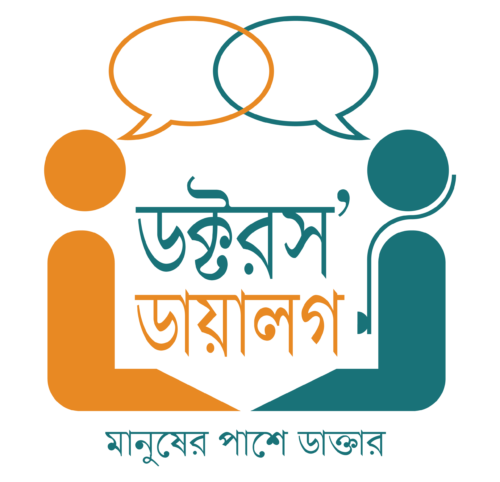

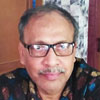





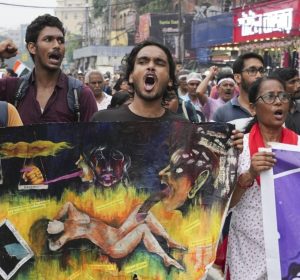
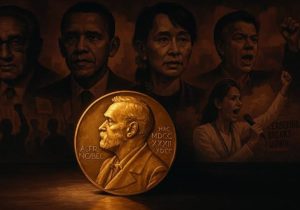
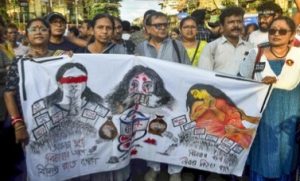
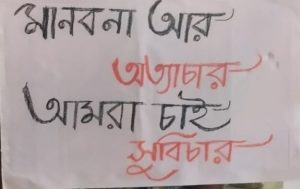
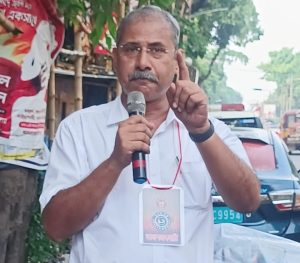







Very informative sir .🙏🏼